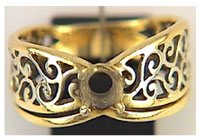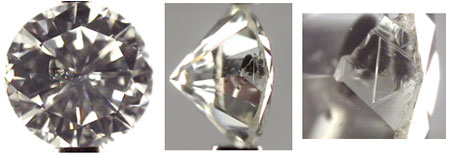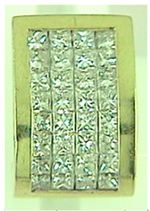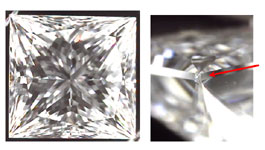When a Picture is Worth Several Thousand Dollars
You know a picture is worth a thousand words, but did you know that to jewelry insurers it could be worth several thousand dollars?
It is common practice for appraisers to supply a photo of the jewelry, either embedded in the appraisal or along with it. But often these photos don’t make it into the insurer’s files. They should, because they can be invaluable in adjusting a claim. A photo helps to:
- Identify the piece. Jewelry can be surprisingly difficult to describe in words. A picture can make it clear at a glance.
- Verify damage. A good photo shows the state of the jewelry when it is insured. It guards against false claims of subsequent damage.
- Verify extent of damage.
- Accurately estimate ease of repair and/or duplication.
- Aid in recovery. According to the U.S. Justice Department, 70% of all stolen personal property is jewelry.
Insurers routinely overpay claims on damaged jewelry. The following examples are drawn from our Salvage Report files. Many of these overpayments could have been avoided if a good photograph of the piece were available before the claim was settled.
1. Just Replace the Stone

The single stone was lost from the ring. The insurer paid the claim as a total loss, though it’s obvious from the picture that a replacement stone could have been made.
Overpayment: $2,656
2. The Damage That Wasn't There

A damage claim was filed for this diamond, but the stone was not damaged at all. The third picture shows that what appears to be damage actually are inclusions in the stone. The appraisal stated the clarity grade to be better than it was. The claim should not have been paid at all.
Overpayment: $7,542
3. Easy to Replace

The center stone on the ring was chipped. The company paid it as a total loss, but the picture shows that simply replacing the stone would be easy.
Overpayment: $11,780
4. Make a Mate

One earring was lost. It had lots of small diamonds, but the picture shows a design that could easily be replicated, rather than paying out a total loss.
Overpayment: $4,206
5. Possible Fraud???

A damage claim was made because the diamond was chipped. The pictures, however, present a host of problematic issues.
The top view shows that the damage is not evident when viewed from above — that is, when viewed as you would see it in a setting. Some questions arise:
- Was the diamond already chipped when the ring was purchased, and the chip hidden by the setting? If so, the insurer is not liable.
- Was it chipped when it was remounted? If so, the jeweler is liable.
- Did the jeweler encourage the customer to file a claim to cover his own incompetence in handling and damaging the stone? The insurer might file a counter claim against the jeweler.
- Should Princess Cut diamonds be insured at all? As we discussed in our October 2003 issue, Princess Cuts are particularly vulnerable to damage and therefore extremely high risk for insurers.
- And finally: This is extremely minor damage; is it even really a chip? Possibly the stone could have been repolished with no loss in value.
The insurer, however, paid the claim as a total loss.
Overpayment: $8,921
6. Dead Giveaway

One diamond earring of a set was lost. A picture of the remaining one shows clear evidence of gem enhancements that are done to make poor quality stones look better. In the left and center pictures, the red color indicates laser drilling, and the “flash effect” visible in the center photo is a telltale sign of fracture filling. In addition, the appraisal stated that the stone was “clarity enhanced” — a phrase that should set off an alarm for adjusters. (See Laser Drilling and Fracture Filling for more complete discussion of these gem enhancements.)
Stones with these treatments are worth considerably less than those of similar appearance that are untreated. The insurer did not have the benefit of the photos and apparently did not realize the significant effect of clarity enhancement on value. The company paid a total loss on both earrings.
Overpayment: a whopping $39,289
FOR AGENTS & UNDERWRITING
All quality jewelry should have a good photo accompanying the appraisal. A photo is invaluable to a jeweler providing a replacement, and an expert can glean a surprising amount of information from it. This translates into great savings for the insurer. As shown in the examples above, it can mean the difference between simply replacing a stone and paying out a total loss.
FOR CLAIMS
For damage claims, get a photo of the item before paying the claim. This helps verify that the item insured is indeed the subject of the claim.
A jewelry expert can refer to the photo (as well as the appraisal) to help verify the quality of the stone and the extent of the damage, and to more easily estimate cost of repair or duplication.
For total loss claims, use the photo when pricing a replacement, as this
simplifies the process for the jeweler.
Insurers rarely get full value on their salvage jewelry. Insist that all salvage
reports include photos, along with detailed gemological descriptions, so you
can get bids on the salvage stones. (See Salvage
Jewelry for other tips on handling salvage.)
©2000-2025, JCRS Inland Marine Solutions, Inc. All Rights Reserved. www.jcrs.com

